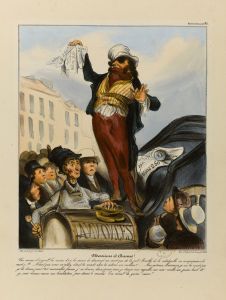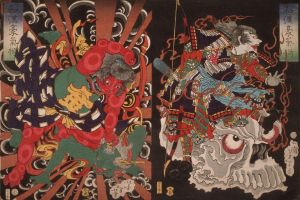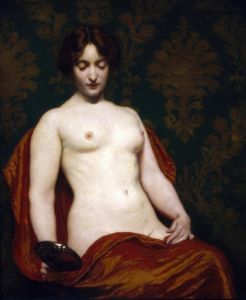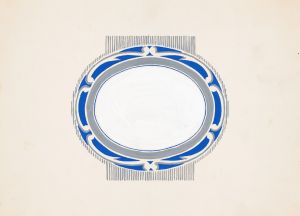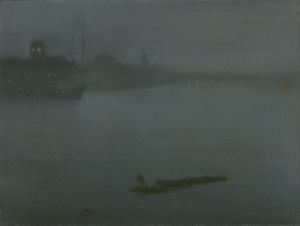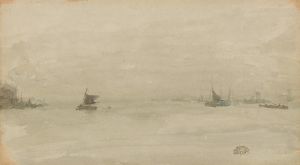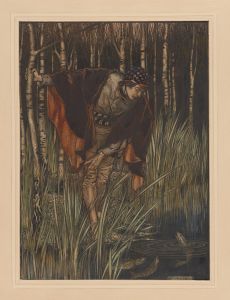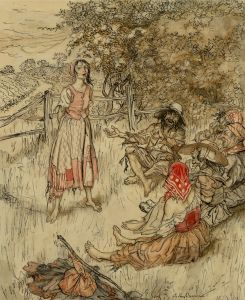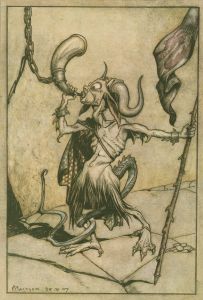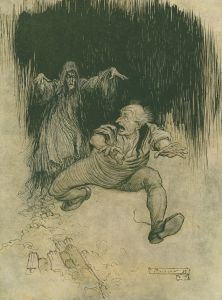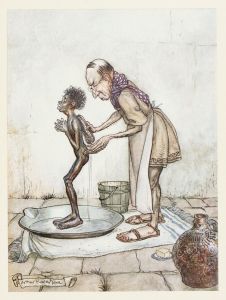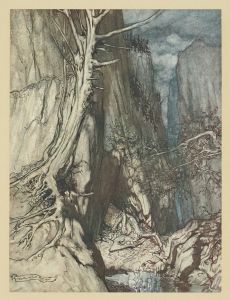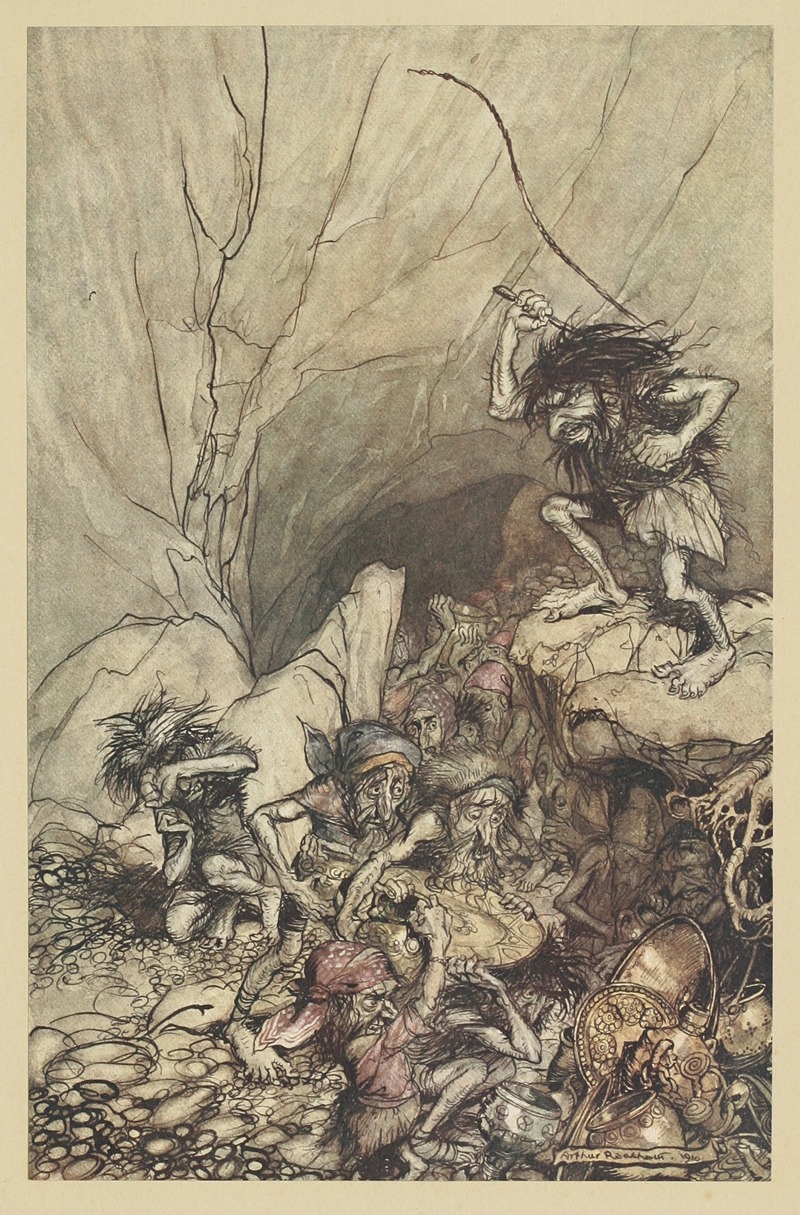
Alberich drives in a band of Niblungs laden with gold and silver treasure
A hand-painted replica of Arthur Rackham’s masterpiece Alberich drives in a band of Niblungs laden with gold and silver treasure, meticulously crafted by professional artists to capture the true essence of the original. Each piece is created with museum-quality canvas and rare mineral pigments, carefully painted by experienced artists with delicate brushstrokes and rich, layered colors to perfectly recreate the texture of the original artwork. Unlike machine-printed reproductions, this hand-painted version brings the painting to life, infused with the artist’s emotions and skill in every stroke. Whether for personal collection or home decoration, it instantly elevates the artistic atmosphere of any space.
"Alberich drives in a band of Niblungs laden with gold and silver treasure" is an illustration created by Arthur Rackham, a renowned English book illustrator and watercolorist. This artwork is part of Rackham's celebrated series of illustrations for Richard Wagner's opera cycle Der Ring des Nibelungen (The Ring of the Nibelung), which was published in a deluxe edition in 1911. Rackham's illustrations for this series are widely regarded as some of his most iconic and influential works, showcasing his mastery of mythological and fantastical themes.
The scene depicted in this illustration is inspired by Wagner's opera Das Rheingold (The Rhinegold), the first of the four operas in the Ring cycle. Alberich, a dwarf from the race of Nibelungs, is shown driving a group of his kin who are burdened with gold and silver treasure. This imagery reflects a key moment in the opera, where Alberich, having stolen the Rhinegold and forged it into a powerful ring, uses his newfound power to enslave the Nibelungs and force them to mine and amass vast wealth. The treasure symbolizes the corrupting influence of greed and power, a central theme in Wagner's epic work.
Arthur Rackham's interpretation of this scene is notable for its intricate detail, dramatic composition, and atmospheric use of color. His ability to capture the dark, otherworldly tone of Wagner's operas contributed to the enduring popularity of his illustrations. Rackham's work on The Ring of the Nibelung is often praised for its ability to bring Wagner's complex and myth-laden narrative to life, making it accessible to a wider audience.
The 1911 edition of The Ring of the Nibelung featuring Rackham's illustrations was published by William Heinemann in London and Doubleday Page & Co. in New York. It included a translation of Wagner's libretto by Margaret Armour. Rackham's illustrations for this edition are considered a landmark in the history of book illustration, blending elements of Art Nouveau with his unique artistic style.
This particular illustration, like others in the series, reflects Rackham's deep engagement with the source material and his skill in visual storytelling. It remains a significant example of early 20th-century book illustration and continues to be appreciated by art and opera enthusiasts alike.





